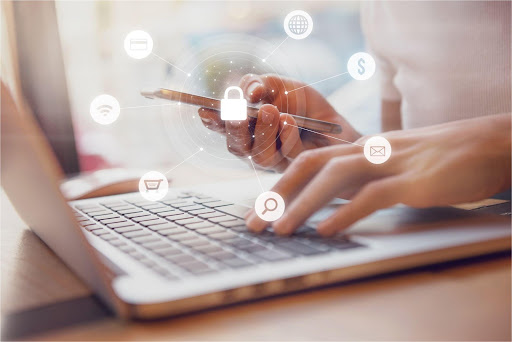Top 10 Email Safety Tips For Employees and Organizations
Email is one of the top communication tools for most organizations. It’s an effective way of sending and receiving information quickly and securely. However, email is quite vulnerable to phishing attacks and cyber security threats, making email security an essential part of an organization’s agenda. Companies have to be a step ahead of cybercriminals by protecting themselves against spam and email breaches that involve password thefts, viruses, ransomware, and malware attacks. This article will list the top 10 email safety tips that companies can implement to stay safe when communicating by email.
Know Your Sender
Never open an email from someone you don’t know, whether at work or home. Before clicking any unknown link, always ask yourself whether you recognize the sender. If you’re sure you don’t know the sender, report the message as spam and block the sender. If you were expecting an email from someone and didn’t know their email, you can still report the email as spam and call them or contact them through a different means to verify if they are the sender. If you suspect it’s something to do with a job you applied for or a client contacting you, check the email address and search your browser to look them up on Google. See what comes up, and just make sure not to click any links.
Avoid Taking Immediate Action
Most malicious emails will often entice you to take specific action to help them achieve their goal. It can be as simple as downloading an attachment or clicking and opening a link. Don’t click anything until you’ve verified that the link is legitimate and harmless. Some will use the fake unsubscribe links as bait for malicious intent. If you’ve identified an email as suspicious, avoid interacting or taking any action that can get you into trouble.
Refrain from Replying or Forwarding Unknown Emails
When you suspect that an email is spam, don’t reply or send threats or any polite requests. This only confirms to spammers that you’re an eligible target for continued spamming attempts. Don’t forward the message to other people to avoid spreading the threat—instead, report it as spam and move on.
Know What To Look for in Suspicious Email
If you have no way of contacting the sender apart from replying, check for red flags that signal spamming. One of these red flags is typos. Malicious hackers have no time to go through their emails and correct grammar and spelling errors. Another common redflag is weird URLs. Scammers will use fake URLs to make it look like they’re offering information from respected organizations. The email may also include several instances requesting you to click on a link.
Use Password Best Practices
Avoid using common words or your name and date of birth to create passwords. Using strong, unique words and phrases, the more random, the better. The FBI also recommends using lengthy passphrases as opposed to short complex passwords. Consider backing up the password or passphrase with 2-step authentication, which sends a unique code to your phone every time you log into your email account.
Use a Dedicated Spam Blocker and Filter
If you operate your business primarily through emails, you’re likely to get hundreds of emails every day, which is why it’s so essential to use spam filters. A dedicated spam filter will flag emails marked as spam to separate them from the rest of the email.
Log Out
Logging out is the best way to protect your email from landing in the wrong hands. For instance, if you share a computer at work, make sure to end every session by logging out of your account. Apart from hackers, inside jobs are also common, which is why you shouldn’t trust anyone with your work or personal emails.
Separate Work Accounts from Personal Accounts
Using your personal email on your work computers or your work email on your personal computer is risky. It’s even riskier if you use the same email for both purposes. It is also a bad idea to keep information meant for work in your personal account. If a hacker gains access to your account, they can damage both sides of your life.
Avoid Using Public WIFI
We all know how dangerous using public WIFI can be, especially if you’re using it to open sensitive information or make online transactions. Such networks are surprisingly simple to crack into and leave your account at risk of getting attacked by hackers lurking somewhere in the networks waiting to get the critical information they can use for their personal benefits.
Use Encryption Software
Exchanging sensitive files such as financial information by address comes with certain risks. That’s because most emails are not protected as they travel through servers. Organizations need to use email encryption to protect the contents of email messages sent by their employees. An attacker can intercept an attachment or email message en route between the recipient and the sender. Fortunately, there are many specialized security technologies you can use to protect the integrity of email messages and attachments while in transit.
It is possible to stay safe working with emails, but quite risky. Keep in mind that your security is in your own hands, and it depends on how proactive you’re at keeping email security a priority.
